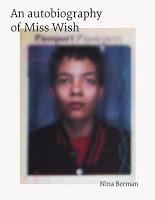INTERVIEW: Alexa Becker
INTERVIEW: Alexa Becker – Critical Mass 2017 Top 50 Exhibition Curator

We are over-the-moon excited that Alexa Becker is the Critical Mass Top 50 Exhibition Curator this year! Alexa is the widely-respected, talented Acquisitions Editor at Kehrer Verlag publishers, based in Heidelberg, Germany. She is a frequent reviewer at international Portfolio Reviews events, including Photolucida. Kehrer Verlag has published books by these photographers because of relationships beginning at Photolucida: Ben Huff (Last Road North), Nancy Baron (The Sweet Life, Palm Springs), H Lee (Grassland), Lindsay Morris (You are You) and Dima Gavrysh (Inshallah). Photolucida happily collaborated with Kehrer Verlag on Mila Teshaeiva’s monograph Promising Waters, after Mila was awarded the Critical Mass book award in 2013.
Kat Kiernan, Editor at Don’t Take Pictures asks Alexa Becker some great questions we thought we would share with you – originally published here on July 3rd! Thanks, Kat!
Don’t Take Pictures: How would you describe Kehrer Verlag to someone who has never seen your books?
Alexa Becker: We are a bunch of book and photography enthusiasts who come from different walks of life. Kehrer Verlag (the publishing house) works hand in hand with Kehrer Design. This means image processing, design and the rest, like proof reading, project management, PR, etc. are all happening under one roof. Basically, you can follow every step of the book’s realization in our office, except for printing and binding, which both exclusively happen in Germany but not in our basement, as some people like to think (That’s STEIDL.)
DTP: How do you find photographers that you want to work with and how do you determine what might make a good photo book?
AB: There are several sources to find great photography. Festivals, blogs, online magazines and submissions, recommendations by photographers we previously worked with and by curators, too. A project that manages to strike a chord with us is wonderful. It’s probably impossible to photograph a completely “new” subject matter, so the main goal is to capture it in an individual way. This also means being authentic to one’s vision. We as a team like topics that present different perspectives and that challenge us as a society. Topics that ask us to be more tolerant, more attentive and careful towards the world we live in.
DTP: Have there been any books that have been particularly rewarding to produce or that you felt a special kinship with?
AB: That’s both a good and tough question because you put your energy and heart in the book you are working on at the moment. I have to say it was a special moment when Jessica Backhaus showed us her portfolio at Frankfurt Book Fair many years ago which became our first serious photo book, Jesus and the Cherries. Before, we had focused more on fine art, but with Jessica, a new era was initiated and great interest in photography was sparked. It is especially rewarding to work with her on a long-term basis, producing beautiful book after beautiful book. Also, it is a wonderful experience to witness the development within the photographer’s work over the years. So yes, I think there’s this special kinship you’re referring to.

DTP: What are some forthcoming titles you are particularly excited about?
AB: A project, which I first saw as a PDF that really shook me up, was An Autobiography of Miss Wish by Nina Berman. I was impressed by the strength of the work itself but also by the collaboration between photographer and model, which lasted a good 20 years. It also gives us an important insight in a part of society that we usually push aside or like to ignore. I am very grateful we will publish this book, which will come out in the US in Spring 2018.
DTP: What was one of the most challenging books that you have published and why?
AB: One of the most challenging books in terms of printing was Dima Gavrish’s book Inshallah (2015). He and designer Teun van der Heijden had chosen a very haptic, open paper, which soaks up the ink like a sponge. Dima primarily wanted rich blacks and we wanted to preserve as much image detail as possible. In the end, we tried a new kind of offset printing and Dima ruled us over regarding details vs. blacks. However, we managed to keep some details and everyone was happy in the end. The paper, unvarnished, feels great, the blacks are black and the photographs are amazing. Thankfully, the book has been received several awards. Another challenging book for entirely different reasons was Christoph Bangert’s War Porn (2014). The collaboration with him was exceptionally smooth but our sales representatives were predicting literally zero sales. The challenge was to do the book no matter what because we believed in it. Three editions and hundreds of interviews and talks later we are very grateful to have made this decision.
DTP: It seems that an increasing number of photographers, at all stages of their careers, are looking to publish a book. What should photographers think about before they embark on the book process?
AB: They should be convinced that this is the body of work they want to see as a book. They should also know what this book can do for them career-wise and that this is the right moment to do it. A book requires a lot of work before and after and one should be prepared for that.
 |
| Photolucida 2015: Alexa Becker and Twinka Thiebaud Credit: Harris Fogel |




